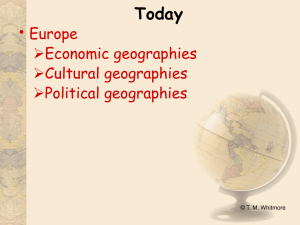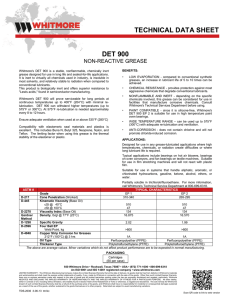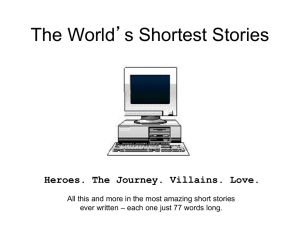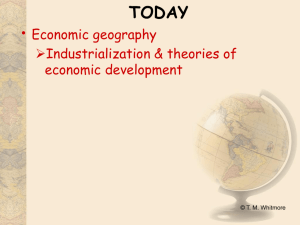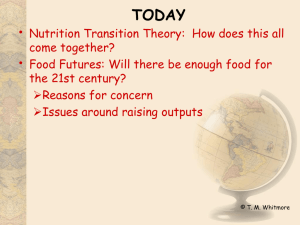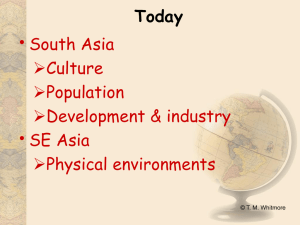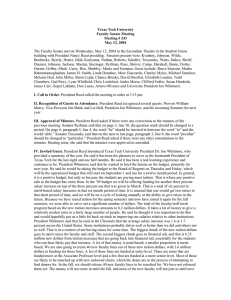120-4-13
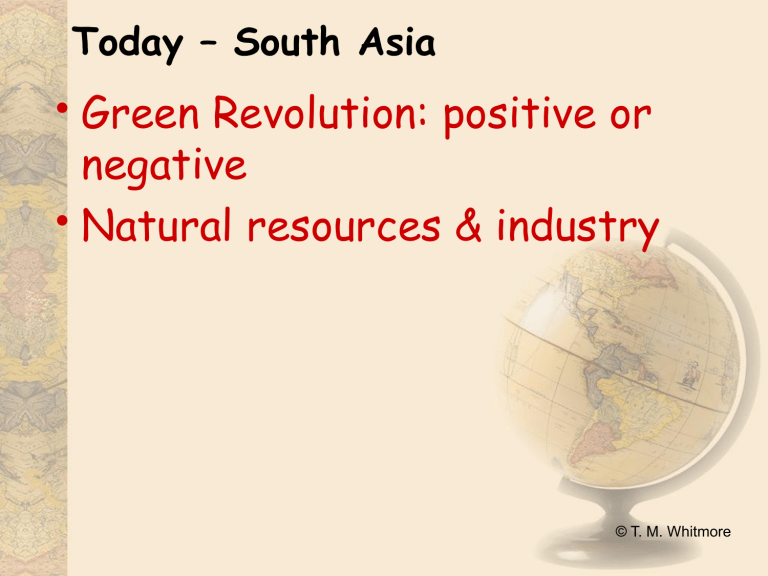
Today – South Asia
•
Green Revolution: positive or negative
•
Natural resources & industry
© T. M. Whitmore
Last time – Questions?
•
Agriculture & cattle
•
Green Revolution
•
Consequences of Green
Revolution
© T. M. Whitmore
South Asia & GR
•
Per hectare productivity up
Yet still below world’s best
•
Poor performance due to
Uncertain Monsoon and lack too little irrigation
•
Tenure uneven
Most small holders are too poor =>
Cannot afford inputs
•
But, since late 1960s S Asia has been able to feed itself – but for how long?
© T. M. Whitmore
Globally, Problems & Successes
– critics and advocates
•
Successes
2-3 times as much per hectare
Far lower prices for main grain crops world wide
Lower rates of extensification world wide
Vastly increased food production
and lower absolute numbers
Yields Are Up, But Growth is Slowing
5
4
3
2
1
0
1960 1965 1970 1975 1980
Wheat Yield Rice Yield
World Resources Institute
1985 1990 1995
Maize Yield
2000
Problems with the GR technology
• Chemical pollution
Runoff can enter water tables and poison local water sources
Individual farmers often have very little knowledge of risks using pesticides especially — thus compromising their health
© T. M. Whitmore
Problems with GR technology II
• Soil damage
Chemicals, especial herbicides and other organic killers, can also kill micro organisms within the soils
Very “tight” spacing of crops in the field lead to large demands on the soils for nutrients
Tight spacing and mechanization can lead to soil compaction
Erosion & salinization
© T. M. Whitmore
Other Problems
• Uneven geographic and cropspecific impacts
Little improvement in pulses and root crops
Little improvement in dryland crops - mostly un-irrigated
(barley, millets, and sorghums)
• Recent increases due to increase in fertilizer use not seeds per se
© T. M. Whitmore
Problems continued
• Impacts on large and small holders
Difficult for poor to afford the
“package”
Benefits of improved output mostly to the already relatively better off
• Other criticisms
Genetic loss
Petroleum dependence (fertilizer)
Dependence on irrigation
Does not “solve” the food problem
Natural Resources & Industry
• India dominant for resources and industry
• Bangladesh, Sri Lanka, and Pakistan new centers for low-tech assembly
(maquiladora type labor)
• Indian natural resources:
Iron; coal
Little petroleum
© T. M. Whitmore
Industry & Economic Development
• Industrial development & British colonial legacy
• New “back office” and hi-tech developments
• Maquiladora-type, export led developments
Muhammad Yunus & Grameen Bank
Awarded The Nobel Peace Prize for
2006 www.grameen-info.org/
Also see www.kiva.org
Locales of industrial development
• Pakistan: Lahlore
• Bangladesh: Dhaka
• India
Old colonial cities
Mumbai/Bombay; Delhi – light industry & finance
Calcutta & W Bengal – heavy industry
New “Silicon plateau” Bangalore-
Madras
© T. M. Whitmore


